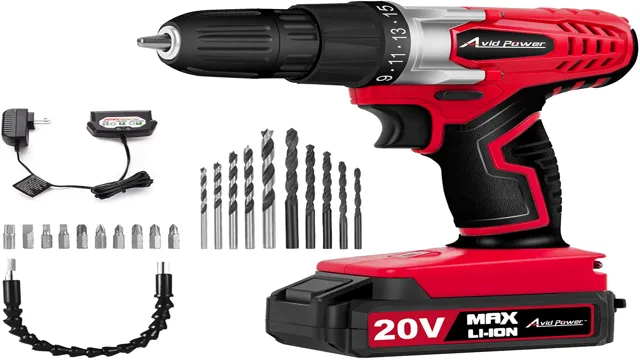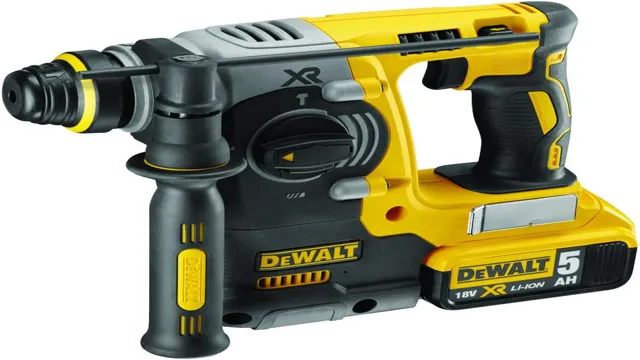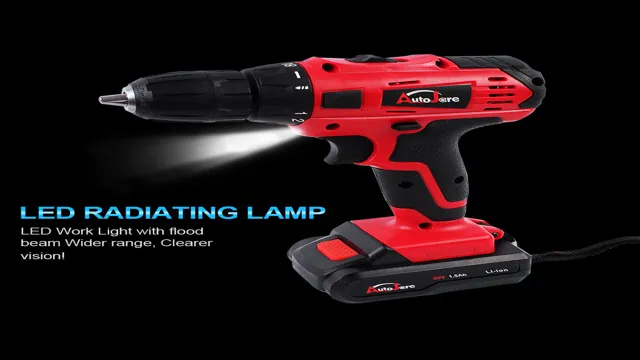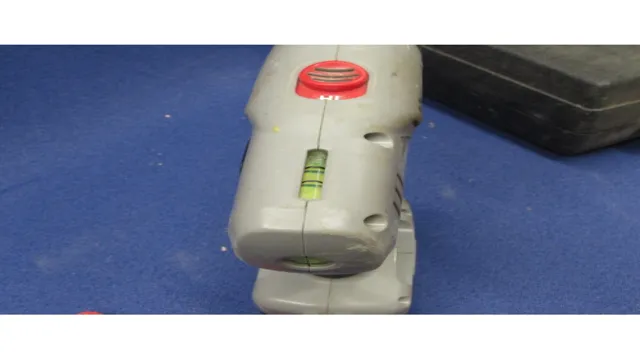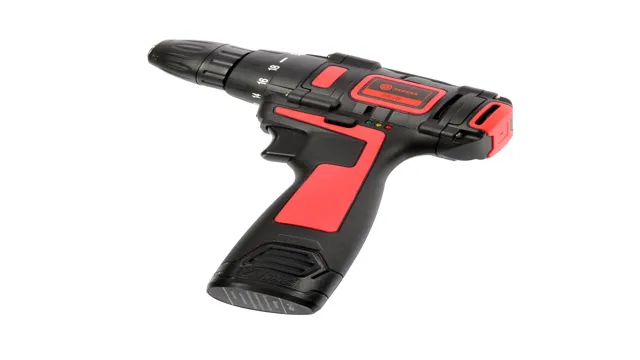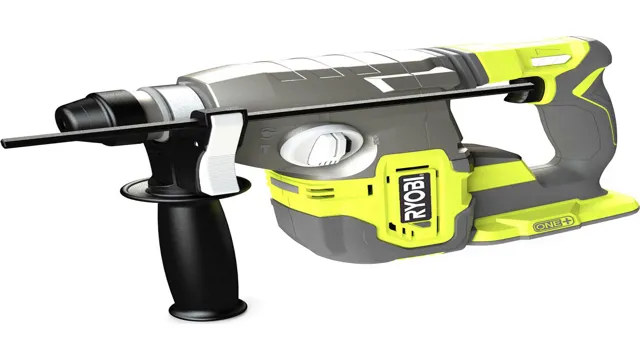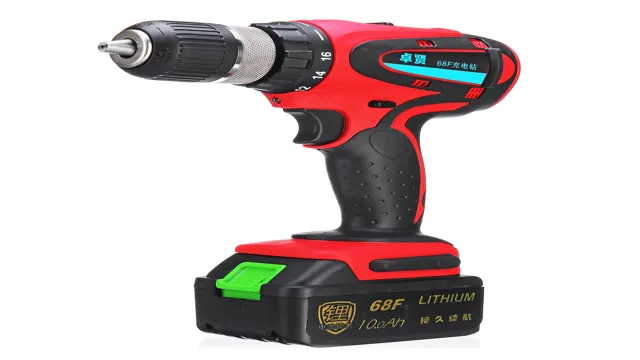Can Cordless Screwdriver be Used as a Drill? Tips to Use it Efficiently.
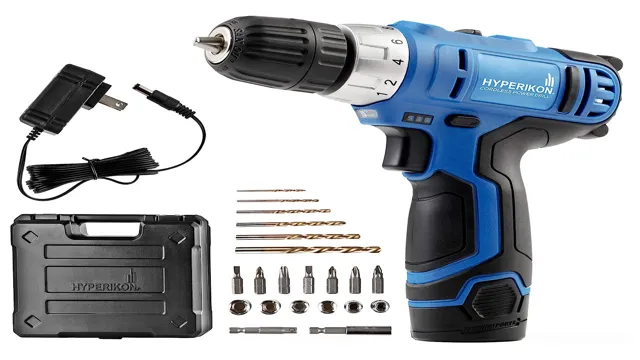
Screwdrivers and drills are two essential tools that every DIY enthusiast and professional should have in their toolbox. But, with so many options available, it can be challenging to determine which one is ideal for your specific needs. In this blog, we’ll explore the differences between cordless screwdrivers and cordless drills and help you decide which one is right for the job.
We’ll explain the essential features of each tool, their strengths, and limitations, as well as the types of projects for which each is best suited. So, if you’re getting ready to tackle your next home improvement project and want to ensure you have the right tool in hand to get the job done, keep reading!
Can a Cordless Screwdriver be Used as a Drill?
If you’re in a pinch and don’t have a drill on hand, you may be wondering if a cordless screwdriver can be used as a substitute. The short answer is yes, to a certain extent. While a cordless screwdriver is designed for driving screws into wood and other materials, it can also be used for drilling smaller holes.
However, it’s important to keep in mind that cordless screwdrivers typically have lower torque and speed compared to drills, which means they may struggle with tougher materials or larger drill bits. Additionally, screwdriver bits are not designed for drilling and may not have the same durability as drill bits. So, while using a cordless screwdriver as a drill is possible, it’s important to be mindful of its limitations and consider investing in a dedicated cordless drill for more heavy-duty drilling needs.
Understanding the Concept of Torque
Torque When it comes to power tools, torque is an essential concept to understand. In basic terms, torque is the force that rotates an object around an axis or pivot point. It can be calculated by multiplying the force applied by the distance from the pivot point.
So can a cordless screwdriver be used as a drill? The answer is yes, but with limitations. Cordless screwdrivers typically have a lower torque and RPM compared to drills. While they can perform some light drilling tasks, they may not be suitable for heavier tasks like drilling through dense materials.
It’s important to understand the limitations of your tools and use them accordingly. Remember, just because a tool can perform a certain task, doesn’t necessarily mean it’s the best tool for the job. Always evaluate your options and choose the appropriate tool for the task at hand.
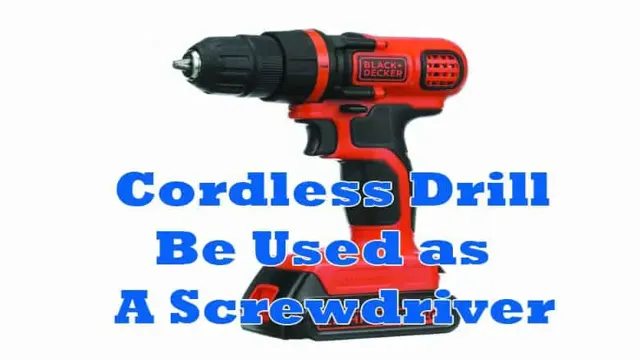
Power and Speed
Cordless screwdrivers have come a long way in terms of power and speed, but can they replace a drill in certain applications? The answer, of course, depends on what you intend to use the tool for. In many cases, a cordless screwdriver might be all you need for basic drilling tasks, like making pilot holes for screws or installing small anchors. However, if you need a tool with more power and speed, a cordless drill would be a better option.
Cordless drills are designed to provide more torque and higher speeds, allowing you to tackle more demanding tasks like drilling through thick metal or dense hardwood. So while a cordless screwdriver can be used as a drill in a pinch, it’s not a replacement for a full-fledged cordless drill.
Factors to Consider While Choosing Between a Cordless Screwdriver and a Drill
When it comes to choosing the right tool for the job, there are several factors to consider between cordless screwdrivers and drills. While a cordless screwdriver may seem like a handy tool, it may not always be the best choice for certain tasks. For example, if you need to drill holes in thicker materials, a drill would be a better option due to its power and torque.
However, if you’re looking to drive screws into thinner materials, a cordless screwdriver would be sufficient. As for the question of whether a cordless screwdriver can be used as a drill, the answer is yes, but with limitations. Cordless screwdrivers typically have a lower torque and speed than drills, so they may not be suitable for tougher drilling tasks.
In the end, it’s important to evaluate your specific needs and the tasks at hand before choosing between a cordless screwdriver and a drill.
Intended Use
When choosing between a cordless screwdriver and a drill, it’s essential to consider the intended use of the tool. If you’re going to be working on small projects such as assembling furniture or hanging picture frames, a cordless screwdriver may be the best choice. It’s lightweight and compact, making it easier to maneuver in tight spaces.
On the other hand, if you’re going to be tackling more significant projects such as drilling through thick materials like wood or metal, a drill would be more appropriate. Drills have more power and can handle tougher jobs that a screwdriver would struggle with. It’s also important to consider the battery life of the tool and how often you’ll need to recharge.
So, before making your final decision, think about the type of projects you’ll be undertaking, the space you’ll be working in, and your battery life requirements. By considering these factors, you’ll be able to choose between a cordless screwdriver or a drill that’s perfect for your needs.
You May Also Love:
Size and Weight
When choosing between a cordless screwdriver and a drill, one important factor to consider is size and weight. Cordless screwdrivers are typically smaller and lighter than drills, making them easier to handle and maneuver in tight spaces. They are also ideal for tasks that require precision and accuracy, such as assembling furniture or installing light fixtures.
On the other hand, drills are more powerful and better suited for heavy-duty tasks, such as drilling through thick materials or driving in large screws. They may be bulkier and heavier, but they are also more versatile and can handle a wider range of applications. Ultimately, the choice between a cordless screwdriver and a drill will depend on the specific needs of the user and the tasks at hand.
A good rule of thumb is to choose a tool that feels comfortable in your hand and meets your specific requirements.
Battery Life
When it comes to choosing between a cordless screwdriver and a drill, there are several factors to consider, and one of the most critical is battery life. A cordless screwdriver typically has a smaller battery, which means it won’t last as long as a drill, but it’s also less powerful. This can be an advantage if you’re working on a small, quick project, but it can become frustrating if you need to use it for an extended period.
On the other hand, a drill is typically more powerful and has a larger battery, which means it can handle longer projects more easily. However, this also means that it’s heavier and can be more challenging to maneuver, which can be a disadvantage if you’re working in tight spaces. Ultimately, the choice between a cordless screwdriver and a drill comes down to your individual needs and preferences, so take the time to consider all the factors before making your decision.
How to Use a Cordless Screwdriver as a Drill?
Cordless screwdrivers are incredibly versatile tools, and they can be used for a variety of different tasks. One question that often comes up is whether a cordless screwdriver can be used as a drill. The simple answer is yes! Many cordless screwdrivers come with drill bits that allow you to use them as a drill.
However, it’s important to note that cordless screwdrivers are not as powerful as traditional drills, so they may not be suitable for heavier drilling tasks. Additionally, the chuck on a cordless screwdriver may not be able to accommodate larger drill bits, so make sure to check the manufacturer’s recommendations before attempting to use your cordless screwdriver as a drill. With these caveats in mind, a cordless screwdriver can be a handy tool for smaller drilling tasks around the home or workshop.
Just make sure to use the right bit and watch out for overheating, and you’ll be all set!
Selecting the Right Bits
Selecting the Right Bits for Using a Cordless Screwdriver as a Drill So, you’ve got a cordless screwdriver and want to use it as a drill? Well, it’s certainly possible, but you’ll need to consider a few things first. The most important thing is to select the right drill bits for the job. Not all bits are created equal, and your cordless screwdriver may not be powerful enough to handle certain materials.
You’ll want to look for bits that are designed specifically for use with a screwdriver, such as hex shank bits. These bits are shorter and more compact than traditional drill bits, making them easier to handle with a screwdriver. Another factor to consider is the material you’ll be drilling into.
For softer materials like wood or drywall, you may only need a basic set of drill bits. However, if you plan on drilling into harder materials like metal or concrete, you’ll need to invest in higher quality bits that are designed for those materials. It’s always best to err on the side of caution and choose a higher quality bit that can handle the job, rather than risking damage to your screwdriver or injury to yourself.
Setting the Proper Torque
When using a cordless screwdriver as a drill, it’s important to know how to set the proper torque. Torque refers to the force at which the drill spins and can have a significant impact on how the tool operates. Generally speaking, the higher the torque, the more power the drill will have.
However, it’s important to not set the torque too high, as this can cause the drill bit to become stripped or damaged. To set the proper torque, begin by determining the size and type of drill bit you’ll be using. Next, adjust the clutch on the cordless screwdriver to a setting that’s appropriate for the job at hand.
Once you’ve set the torque, test it out on a piece of scrap material before beginning your project. This will help ensure that you’ve properly set the tool and that it will function as intended. With a little practice and patience, you can easily use a cordless screwdriver as a drill and tackle a variety of DIY projects around your home.
Using the Clutch Setting Properly to Avoid Overdriving the Screws
If you want to use your cordless screwdriver as a drill, it’s important to understand how to use the clutch setting properly to avoid overdriving the screws. The clutch setting is a feature that allows you to adjust the torque of the screwdriver, which prevents the screwdriver from applying too much pressure on the screw and causing it to strip. To use the clutch setting, first select the correct drill bit for your application.
Then, adjust the clutch setting to the level of resistance you expect to encounter. For example, if you’re drilling into hardwood, you’ll need a higher torque setting than if you’re drilling into softwood. Once you’ve selected the correct drill bit and adjusted the clutch setting, you can begin drilling.
Start slowly and apply gentle pressure to the screwdriver. As the screw begins to catch, you can increase the speed and pressure gradually. Remember to keep the cordless screwdriver straight and perpendicular to the surface you’re drilling.
If you angle the screwdriver, it can cause the bit to slip or the screw to strip. With proper use of the clutch setting and correct technique, you can effectively use your cordless screwdriver as a drill. Just remember to always use caution and follow safety guidelines when drilling.
Final Thoughts
In conclusion, while a cordless screwdriver can technically be used as a drill, it may not be the best tool for the job. Cordless screwdrivers are designed to be used for smaller and simpler tasks, such as assembling furniture or hanging pictures. They typically have less power and may not have the necessary torque required for larger drilling jobs.
Additionally, the chuck size of a cordless screwdriver is usually smaller, limiting the compatible drill bit size. It’s always best to use the appropriate tool for the job, and in this case, a drill would be the better choice if you need to complete larger drilling tasks. However, a cordless screwdriver can still be a useful addition to your toolkit for those smaller projects around the house.
So, in short, while a cordless screwdriver can be used as a drill, it’s not the optimal choice.
Conclusion
In conclusion, while a cordless screwdriver may be able to perform some drilling tasks, it’s not designed for heavy-duty drilling jobs. It’s analogous to asking if a bicycle can be used as a motorcycle – they both have wheels and can get you from A to B, but one is specialized for tougher conditions. So, if you’re looking to drill through thick layers of wood or concrete, a cordless drill is definitely the way to go.
However, for lighter tasks such as assembling furniture or hanging curtains, a cordless screwdriver could be the perfect tool for the job. Remember: it’s all about using the right tool for the right task!”
FAQs
Is a cordless screwdriver powerful enough to function as a drill?
It depends on the model and brand of the cordless screwdriver. Some higher-end models can certainly be used for light drilling tasks, but for more heavy-duty drilling, it is best to use a dedicated drill.
Can a cordless screwdriver be used for woodworking tasks?
Depending on the type of woodworking task, a cordless screwdriver can certainly be useful. However, for tasks that require more power and precision (such as cutting or carving), it is best to use a specialized woodworking tool.
Are cordless screwdrivers easy to use for beginners?
Yes, cordless screwdrivers are generally very easy to use and are a great tool for beginners. They are lightweight, easy to maneuver, and typically come with adjustable torque settings for added control.
Can cordless screwdrivers be used for automotive repairs?
Cordless screwdrivers can certainly be used for some automotive repairs, such as removing or installing screws and bolts. However, for more complex tasks (such as engine repairs), it is best to use specialized automotive tools.
What should I look for when choosing a cordless screwdriver?
When choosing a cordless screwdriver, it is important to consider factors such as battery life, torque settings, and the type of chuck (e.g. quick-release or keyless). You should also choose a reputable brand for added quality and longevity.
Can cordless screwdrivers handle screws of all sizes?
Cordless screwdrivers can typically handle screws of various sizes, but it is important to check the specifications of your specific tool to ensure that it can handle the size of screws you need to work with.
Do cordless screwdrivers come with any additional attachments or accessories?
Yes, many cordless screwdrivers come with additional attachments such as screwdriver bits, drill bits, and even socket adapters. Some higher-end models may also include carrying cases or extra batteries.

